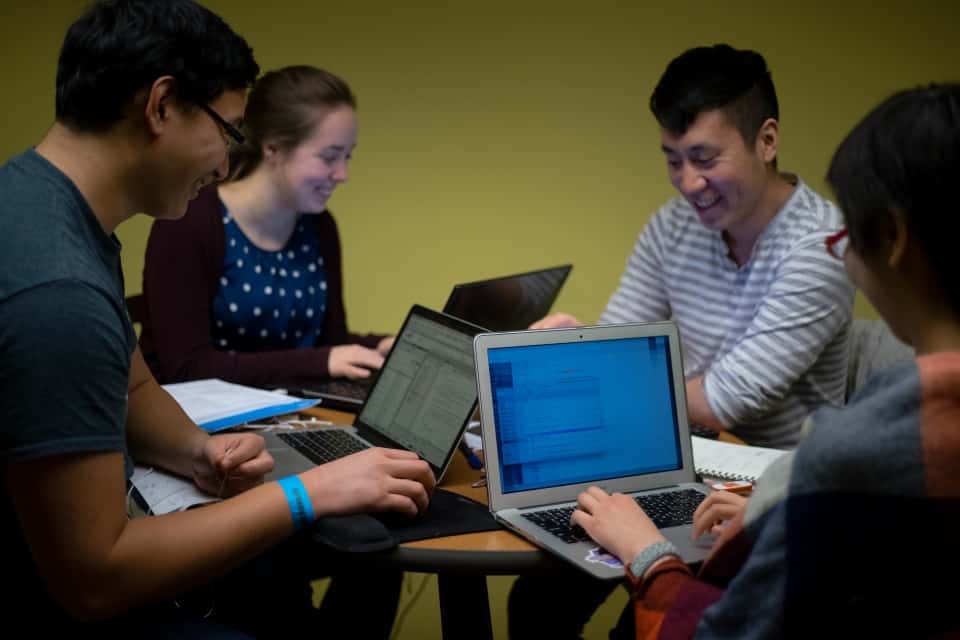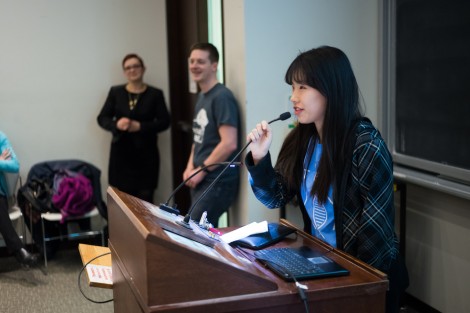The Bahen Centre for Information Technology at U of T was overrun with a crowd of over 150 students on March 12. Standing in line, the students were anxiously awaiting participant wristbands for the annual U of T Biohacks competition held by U of T’s iGEM team.
iGEM is an international undergraduate competition for synthetic biology. Last fall, the U of T team placed silver at the iGem Boston jamboree. As the annual synthetic biology competition at U of T, Biohacks attracts students from universities across Ontario. This year’s event attracted a total of 42 teams of up to four students each.
The event began with a keynote from Hui Yuan Xiong, a researcher and cofounder at Deep Genomics, a company that uses computational machine learning to work with biological data for medical applications. Before the competition, a number of coding workshops were held in order to refresh contestants on the basics of computational biology.
Computational biology, which involves developing and using tools to analyze and model biological data and systems, is an immensely broad field. As such, there was an enormous variety of subtopics within which teams could pick a problem to solve.
While U of T’s iGEM provided a list of suggested topics on the biohacks website as a springboard to work off, virtually anything within the realm of computational biology was considered fair game.
The competition lasted through Saturday night into the morning on Sunday, with many teams — including my own — sacrificing an entire night’s worth of sleep to complete their projects. Late night trips for coffee and poutine were arranged. Biologists and computer scientists cooperated and squabbled, trying to bridge the differences between their disciplines in order to create something as sound in biological theory as it was in lines of code.
The next morning saw just 13 of the original 42 teams present their work, followed by a closing keynote speech from Professor Alan Davidson on his work with gene annotation. Ripped Genes, a team of three won big and walked home with Pebble Watches for their inventive work — they used boolean networks to model genetic circuits.
Biohacks was a long time in the making; according to iGEM Co-President Seray Cicek, the team organizing the event spent nearly five months putting together the event and building the website. But the work put in was certainly not in vain: soon after the website was online, “about 200 users visited [it] within 48 hours,” said Albert Calzaretto, one of the organizers.
“We ultimately had around 500 people register across Canada,” added fellow organizer and iGEM Co-President Anthony Zhao — “but we could only have space for 150.” “There’s clearly great potential and interest in bioinformatics,” said Calzaretto.
Biohacks was a weekend pushing biology, computer science, and human fatigue to their upper limits.



